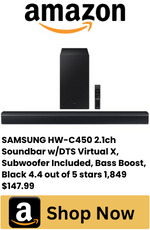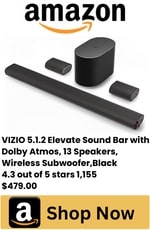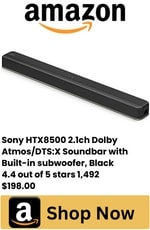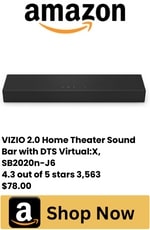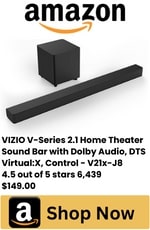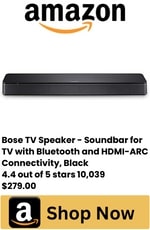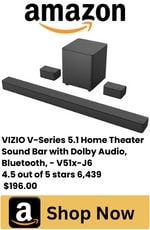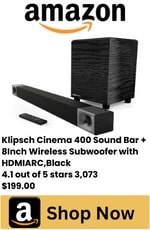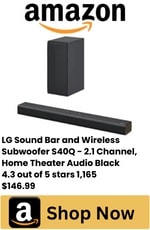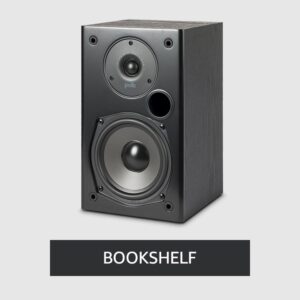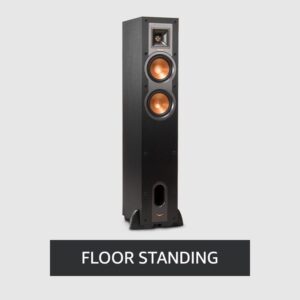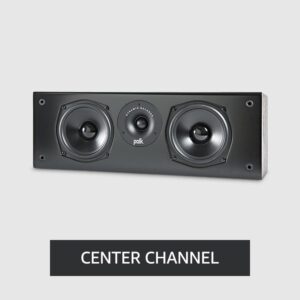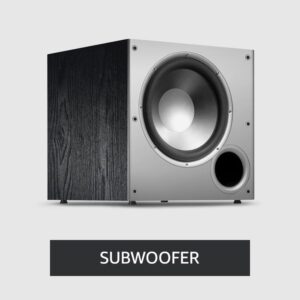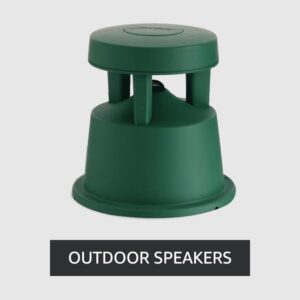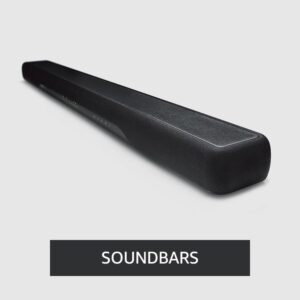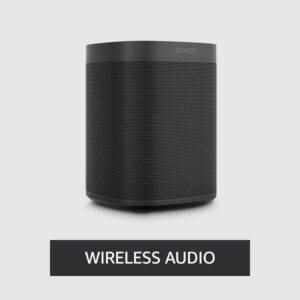Passive vs Active Subwoofers: What’s The Difference?
Excitement and overwhelming feeling are associated with setting up your own home theater system. It is essential to consider so many different factors. Initially, I had plenty of questions about building my home theater system. A subwoofer plays a particularly important role in a home theater setup, especially as I learned more about its importance. If you’re like me, you may be unaware of the different types of subwoofers available today. Passive and active subwoofers are the two most popular subwoofers for home theaters.
So, passive vs active subwoofers: what’s the difference? A receiver or amplifier is required to power passive subwoofers. Audio sources are the only thing active subwoofers need besides an amplifier and power source.
In this article, we will take a look at the main differences between the two types of subwoofers and how these differences may affect the way that you design your system.
Table of Contents
What Is A Passive Subwoofer?

Passive subwoofers require external power sources such as amplifiers or receivers. Typically, passive subwoofers are preferred by home theater designers for large rooms with multiple speakers.
To produce sound, speakers, and subwoofers both require power from a source, which we explained in our guide. The amp or receiver you choose for passive subwoofers should deliver enough power to sustain the deep tones they produce. In addition, if your speakers are used in conjunction with the rest of your home theater sound system, you should consider how much power they will need.
Connecting all the pieces, a passive subwoofer might appear more complicated. You have both the source components and the additional amplifier, so you have two types of components. Therefore, more cabling will be needed.
Passive subwoofers are commonly used that are being incorporated into home theater systems for use with custom applications. A passive subwoofer is often mounted in a custom installation in the wall or inside the house. There are often advantages to passive subwoofers over active subwoofers. However, custom installation and a receiver with more power can add to the cost of passive subwoofers.
You can also link passive subwoofers together to create larger or more dynamic home theaters. Thus, you don’t have to worry about muddy bass or uneven distribution throughout the room.
For troubleshooting tips on fixing a subwoofer with no sound and optimizing your audio setup, refer to this comprehensive guide How To Fix A Subwoofer With No Sound. Explore step-by-step solutions to address issues and ensure your subwoofer delivers the best possible performance in your home theater system.
What is An Active Subwoofer?
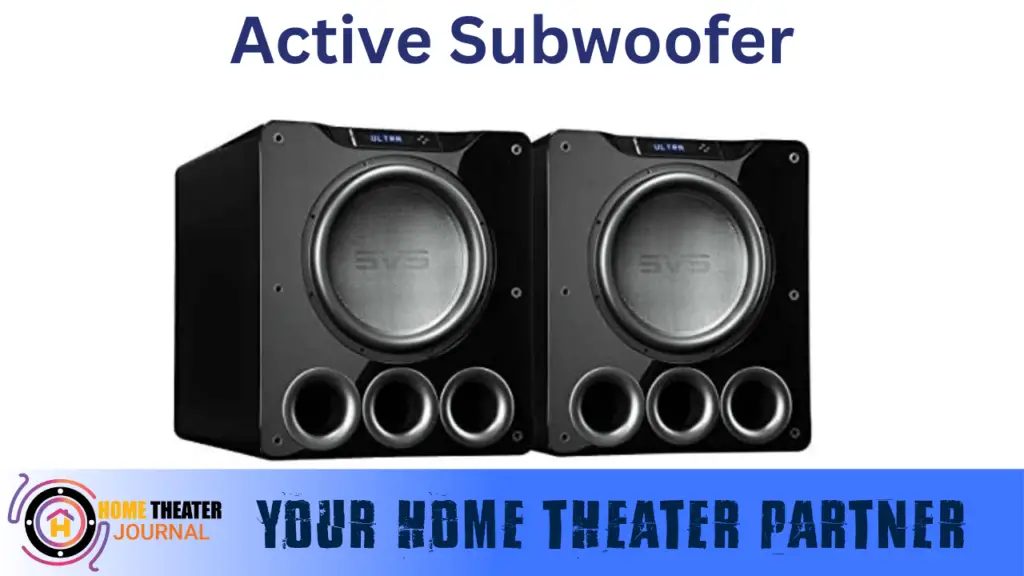
An active subwoofer uses an amplifier to produce power, also called a powered subwoofer. It is easiest to use a single active subwoofer setup with active subwoofers. This makes the placement of active subwoofers more important.
Subwoofers with active components are usually configured to optimize their performance. Active subwoofers offer a complete package for home theater enthusiasts and designers due to the built-in amplifier’s precise matching to the speaker’s power requirements.
There are fewer cables needed for active subwoofers than for passive ones. Additionally, it is usually easier to set up. Therefore, the power a subwoofer needs to operate is higher (watts) when compared to a passive subwoofer. Even though this amount may seem negligible when received on a power bill, it should still be mentioned.
Passive subwoofers are usually less expensive than active subwoofers, as they come with everything you need to get the best bass sound. However, Dolby Digital 5.1 did more than establish a new DVD standard. A designated bass channel is possible by Dolby Digital 5.1, adding five main channels and one Low-Frequency Effects (LFE) channel. A subwoofer using this channel is more likely to provide quality sound and more sound from a single unit rather than using multiple units. (This channel is available on DVD, Blu-ray, and much more.)
For tips on how to identify if a subwoofer is blown and troubleshooting techniques, refer to this informative guide. Recognize potential issues with your subwoofer and learn how to maintain optimal audio performance in your home theater setup.
Comparison of Passive vs Active Subwoofer
| Feature | Passive Subwoofers | Active Subwoofers |
|---|---|---|
| Power Source | Requires external amplifier | Has built-in amplifier |
| Setup | Requires more complex setup | Easier to set up |
| Sound Quality | Sound quality can vary based on the amplifier used | Consistent sound quality |
| Customizability | Can be customized with different amplifiers for different sound preferences | Limited customizability |
| Price | Generally less expensive than active subwoofers | Generally more expensive than passive subwoofers |
| Portability | Less portable due to larger size and need for an external amplifier | More portable due to its compact size and built-in amplifier |
| Maintenance | It may require separate maintenance for the amplifier and subwoofer | Easier to maintain as a single unit |
| Compatibility | Compatible with a wider range of audio systems | It may be limited to specific audio systems |
Passive vs Active Subwoofers: Which is Better?
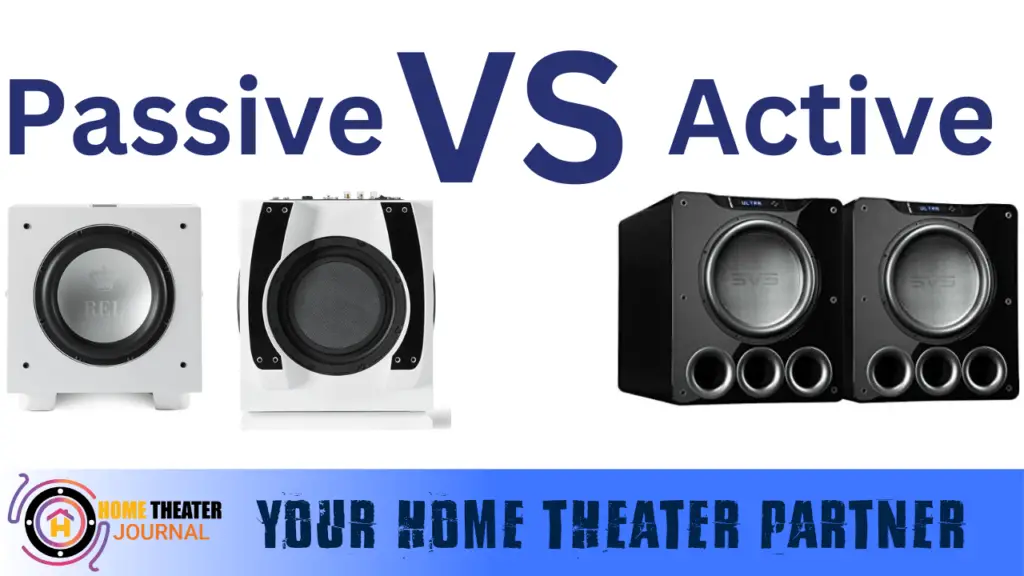
Each type of subwoofer has its pros and cons. Consider each factor if you want to choose the right subwoofer for your intended application. The right subwoofer must have good sound quality. Choosing a subwoofer that meets your needs is more important, regardless of its type. The six key features are, in addition, to sound quality:
- Amplifier/Receiver: Is an external amplifier required for the subwoofer? Is it necessary to have a strong one?
- Power: What is the wattage needed to power your subwoofer? Can you handle this power level with your receiver/amplifier?
- Connectivity: Do you need specific types of cables, and how many do you need?
- Expense: What is the price of the subwoofer? Is there a difference in price between certain types? Remember to include all required components in your budget.
- Setup: What is the ease of setting up the subwoofer? How complicated is the setup? Can it be plugged in and played?
- Design: Is your subwoofer equipped with any features? How easy is it for you to integrate your subwoofer into the décor of your home? Is a more customized approach what you’re looking for?
The following criteria can be used to compare passive and active subwoofers.
Passive subwoofers
Passive subwoofers do not have built-in amplifiers, as previously discussed. Several factors can affect how they are powered and the components they require.
Pros of passive subwoofers:
- Design: A passive subwoofer allows you to configure your home theater system most comfortably.
- Power: Besides requiring less power (watts), these subwoofers have a minimal impact on your power bill.
- Expense: As a matter of fact, passive subwoofers are usually cheaper than active subwoofers since they do not include as many components as their active counterparts do in one unit.
- Setup: Since most receivers/amplifiers today have a subwoofer output, this product works with almost any receiver or amplifier.
- Connectivity: A large home theater setup requires multiple subwoofers, so passive subwoofers are your best choice.
Cons of passive subwoofers:
- Expense: The project’s cost may increase significantly depending on the size and types of components needed.
- Setup: A passive subwoofer is connected using a cable that supplies the power and the signal. Therefore, it is necessary to use a high-quality cable when connecting a passive subwoofer.
- Power: To ensure sufficient power is supplied to your speakers and passive amplifier, consider the full load on the amplifier.
Active subwoofers
In an active subwoofer, everything you need is already in the box, saving you from buying extra parts. In comparison to passive subwoofers, what are the advantages?
Pros of active subwoofers:
- Connectivity: If a home theater system requires only one subwoofer, an active subwoofer is the best option to use for the subwoofer.
- Setup: There is no need to connect a special or extensive amount of cabling to the system, which makes setup extremely simple and easy.
- Amplifier: You won’t have to research the best components for an active subwoofer because all the necessary components are built-in.
- Design: Typically, active subwoofers are built to maximize the use of LFE channels to achieve optimal bass performance from a single speaker. The cable can be placed away from the receiver since only audio signals are provided. Due to their compact size, active subwoofers are easy to place, ensuring the most natural sound.
Cons of active subwoofers:
- Cost: The cost of an active subwoofer is usually higher than a passive subwoofer’s.
- Power: Your utility bill could be affected if you use active subwoofers constantly.
- Compatibility: You need a receiver or amplified system with a subwoofer pre-out port.
- Design: Because your surround sound system should use only one active subwoofer, placement becomes increasingly essential with this type of system.
Connecting subwoofers wirelessly
When it comes to electronics, wireless connectivity is becoming more popular. Your subwoofer is included in this. Active subwoofers are the only subwoofers that offer wireless connections natively. This feature may be integrated into some of the newer models. For older models with AV processors, home theater receivers, or LFE ports, wireless transmitter/receiver kits are also available.
Conclusion
Active subwoofers are today’s most popular type of subwoofer for home theaters, but the choice is ultimately up to you. The active subwoofer offers a quick and easy setup, all-inclusive features, and excellent performance – making it the perfect addition to your home theater system.

Author: Baqarrasheed
I know all about home theater items! I have been doing this for more than three years now. I am good with things like sound systems, TVs, projectors, and all that cool entertainment gear. I like to help folks by testing and talking about these gadgets on Hometheaterjournal. I want to make sure everyone can create an awesome entertainment setup at home without any confusion.
I write the creative content for HometheaterJournal.



